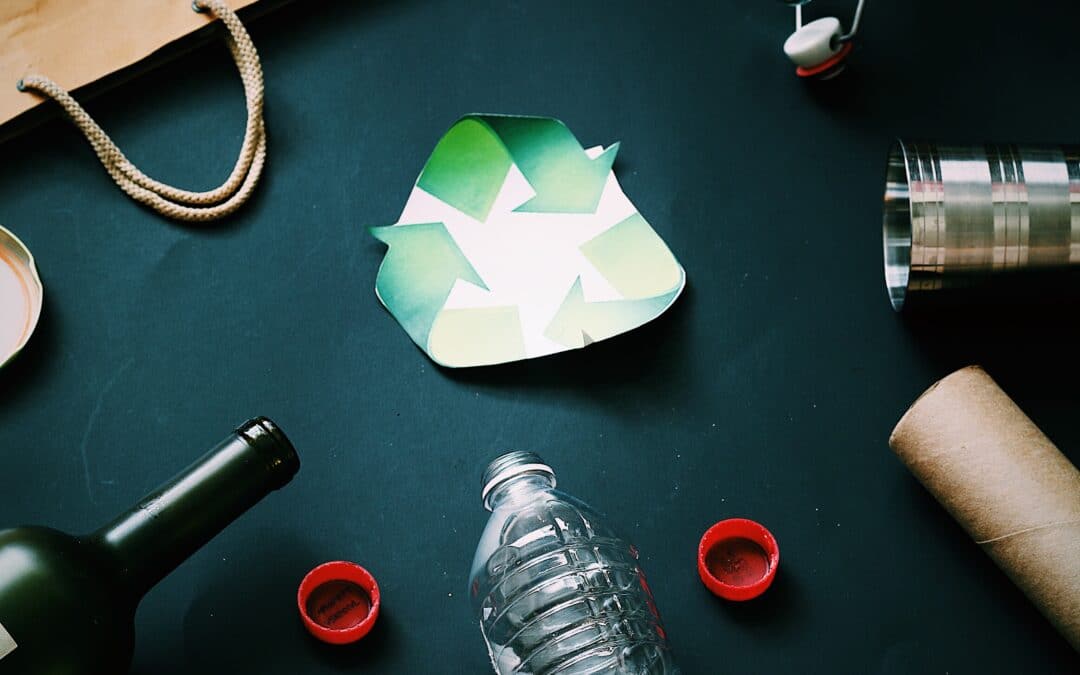In recent years, recycling has become part of our daily lives. How many times do we hear the word recycle? We may see it on posters, newspapers, billboards, packaging, but are we really recycling properly? Do we know which materials are recyclable?
Nowadays, the importance of recycling is gaining more strength every day, especially in these times when pollution is increasing and the measures to curb it seem to be insufficient. For some years now, the culture of recycling has been put into practice, however, not everyone does it and we still continue to discard objects that may have a second (or third) chance of use.
What are recyclable materials?
A recyclable material is one that can be reused after its primary use, with which it is possible to create new materials and transform them for a new use. However, they can also be reused for the same function as they were originally used for, for example, aluminum cans, paper or glass.
The recycling process starts with a selection between those materials that can have another opportunity of use and those that are waste, after being deposited in the corresponding containers. At home we can place several containers, one for organic waste and others for materials that can be reused.
Although not everything can be recycled, the reuse of many objects has led to a decrease in the volume of waste and great environmental benefits.
What materials can we recycle?
There is a wide variety of materials that we can recycle, for example:
- Plastic, such as plastic soft drink bottles, mineral water bottles, containers, etc. It is important to highlight that this is one of the most produced materials worldwide, although not all plastic elements can be recycled.
- Metallic containers.
- Aluminum in all its forms.
- Newspaper, magazines, cardboard or brochures.
- Cells or batteries.
- Electronic devices.
- Textiles.
These materials that can be recycled are deposited in the corresponding containers for that purpose:
- Yellow container: plastic containers, aluminum trays and cans, also white cork and polystyrene.
- Blue container: for paper, whether newspaper, magazines, brochures or cardboard.
- Green container: glass materials are deposited.
- Brown container (in some cases it is orange): it is used for organic waste that is biodegradable, also glass (which is not the same as glass) such as mirrors and glasses, porcelain or earthenware from a plate or cup.
- Clean points or green points: where batteries, light bulbs, electronic waste, aerosols, among other materials that cannot be deposited in the containers described above, are deposited.
Why should we teach children to recycle?
It is very important that children learn to recycle, but they must first be taught to sort materials. From the age of three they can begin to do so. With simple explanations we can start a recycling routine.
Through play, children can learn to recycle, however, it is experience and example that will create the habit, so it is the adult who must motivate with practices that involve the child.
Children now will be the main responsible for the planet in the future, so it is vital that from an early age they understand that recycling contributes to a cleaner environment around them. They must understand that the street will be cleaner if waste is deposited in the right place or that fish will be able to live better in clean water if the waste left on the beach is thrown in the trash can. And above all, that nature will suffer less impact in the extraction of materials if they become aware of all the objects that are already created and can be used again. It is important for children to observe that with those materials that are considered "garbage" new useful and functional objects can be created.
Recycling at home will allow children to create values of responsibility, order, solidarity and ecological awareness, while sharing family moments through the execution of tasks that seem like a game to them, so learning will be meaningful and they will be able to apply it easily as they grow up.
Only simple actions are necessary for them to understand the importance of recycling, such as donating their clothes to other children like cousins or siblings or taking them to churches so that other children can use them, giving those toys they no longer use to needy children or even reusing paper rolls to make dolls. Different ways with which we get a habit of recycling and emerge values that will make the child a more conscious and responsible adult with the environment around him.
At Logos International private school located in Las Rozas, we believe that teaching children to recycle contributes to developing their creativity and capacity for empathy with people, the planet and the community around them.
So much so that we are part of Red Ecoescuelas, a sustainability program in the school environment with an international scope. Thanks to this, we have an annual ecological plan where we carry out a large number of ecological activities with our students, such as paper recycling.
From a very early age, our students are fully accustomed to recycle all kinds of materials (batteries, paper, plastic...) but it is not only about recycling, as we also teach them other values such as rationalizing or reducing the use of materials such as plastics or paper to the extent of their own possibilities.
Environmental awareness is part of our academic style and we intend that a large part of their actions always bear the concept of sustainability in mind.

